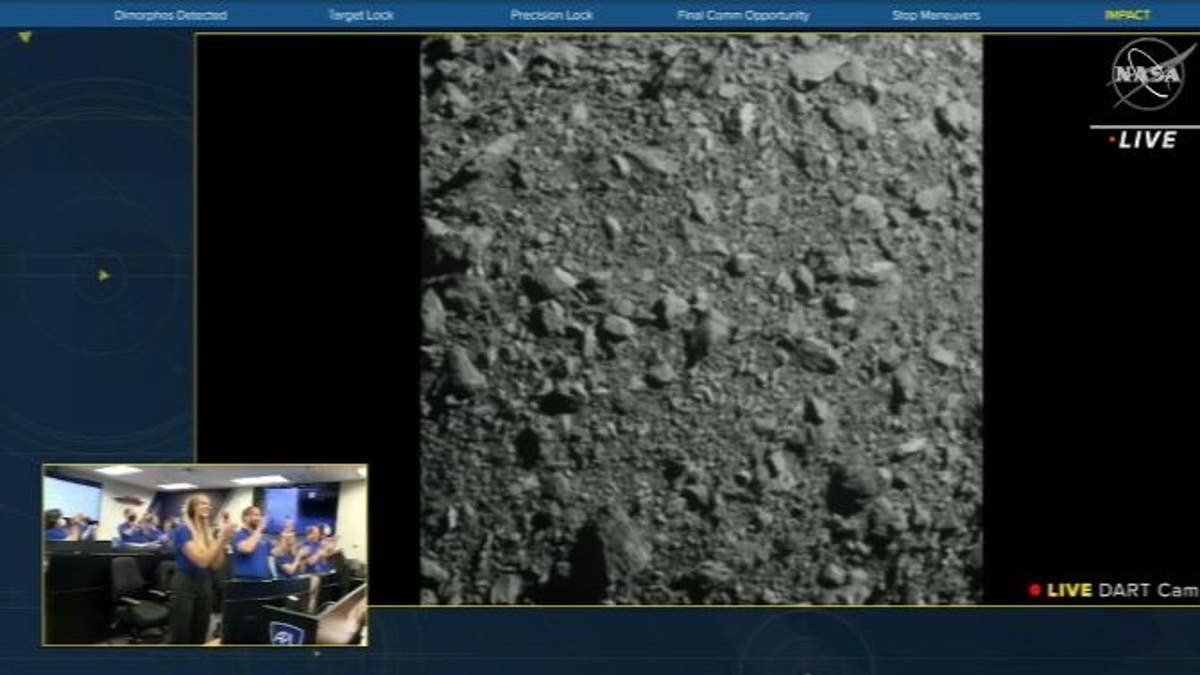NASA DART mission to test-crash spacecraft into asteroid
'The Ordinary Spaceman' author Clayton Anderson explains how the DART Mission could protect our planet from cosmic forces in the future.
The NASA Double Asteroid Redirection Test (DART) spacecraft on Monday deliberately slammed into an asteroid millions of miles away in an innovative test for a possible killer rock that could one day be headed to Earth.
NASA described the mission as an "impact success," saying the "vending machine-sized spacecraft" collided with the asteroid Dimorphos, which is the size of a football stadium and poses no threat to Earth.
The impact occurred 7 million miles away, with the DART spacecraft plowing into the rock at 14,000 mph. Scientists expected the impact to carve out a crater, hurl streams of rocks and dirt into space and, most importantly, alter the asteroid's orbit.
Telescopes around the world and in space aimed at the same point in the sky to capture the spectacle.
DART’s radio signal abruptly ceased indicating that an impact had occurred. Still, it won’t be clear for days or even weeks how much the asteroid's path was changed.
The $325 million mission was the first attempt to shift the position of an asteroid or any other natural object in space.
Monday's target was a 525-foot asteroid named Dimorphos, a moonlet of Didymos, which is a fast-spinning asteroid five times bigger that flung off the material that formed the junior partner. The pair have been orbiting the sun for eons without threatening Earth.

A feed from NASA showing the impact. (NASA)
The DART spacecraft, launched in November, navigated to its target using new technology developed by Johns Hopkins University's Applied Physics Laboratory, the spacecraft builder and mission manager.
Its on-board camera, a key part of this smart navigation system, caught sight of Dimorphos barely an hour before impact.
With an image beaming back to Earth every second, ground controllers in Laurel, Maryland, watched with growing excitement as Dimorphos loomed larger and larger in the field of view alongside its bigger companion.
JAMES WEBB SPACE TELESCOPE CAPTURES STUNNING IMAGE OF NEPTUNE, RINGS
A mini satellite followed a few minutes behind to take photos of the impact. The Italian Cubesat was released from DART two weeks ago.
Scientists insisted DART would not shatter Dimorphos. The spacecraft packed a scant 1,260 pound, compared with the asteroid's 11 billion pounds. But that should be plenty to shrink its 11-hour, 55-minute orbit around Didymos.

This illustration made available by Johns Hopkins APL and NASA depicts NASA's DART probe, foreground right, and Italian Space Agency's (ASI) LICIACube, bottom right, at the Didymos system before impact with the asteroid Dimorphos, left. (Steve Gribben/Johns Hopkins APL/NASA via AP)
The impact should pare 10 minutes off that, but telescopes will need anywhere from a few days to nearly a month to verify the new orbit.
Planetary defense experts prefer nudging a threatening asteroid or comet out of the way, given enough lead time, rather than blowing it up and creating multiple pieces that could rain down on Earth. Multiple impactors might be needed for big space rocks or a combination of impactors and so-called gravity tractors, not-yet-invented devices that would use their own gravity to pull an asteroid into a safer orbit.
CLICK HERE TO GET THE FOX NEWS APP
Significantly less than half of the estimated 25,000 near-Earth objects in the deadly 460-foot range have been discovered, according to NASA. And fewer than 1% of the millions of smaller asteroids, capable of widespread injuries, are known.
The Associated Press contributed to this report.

